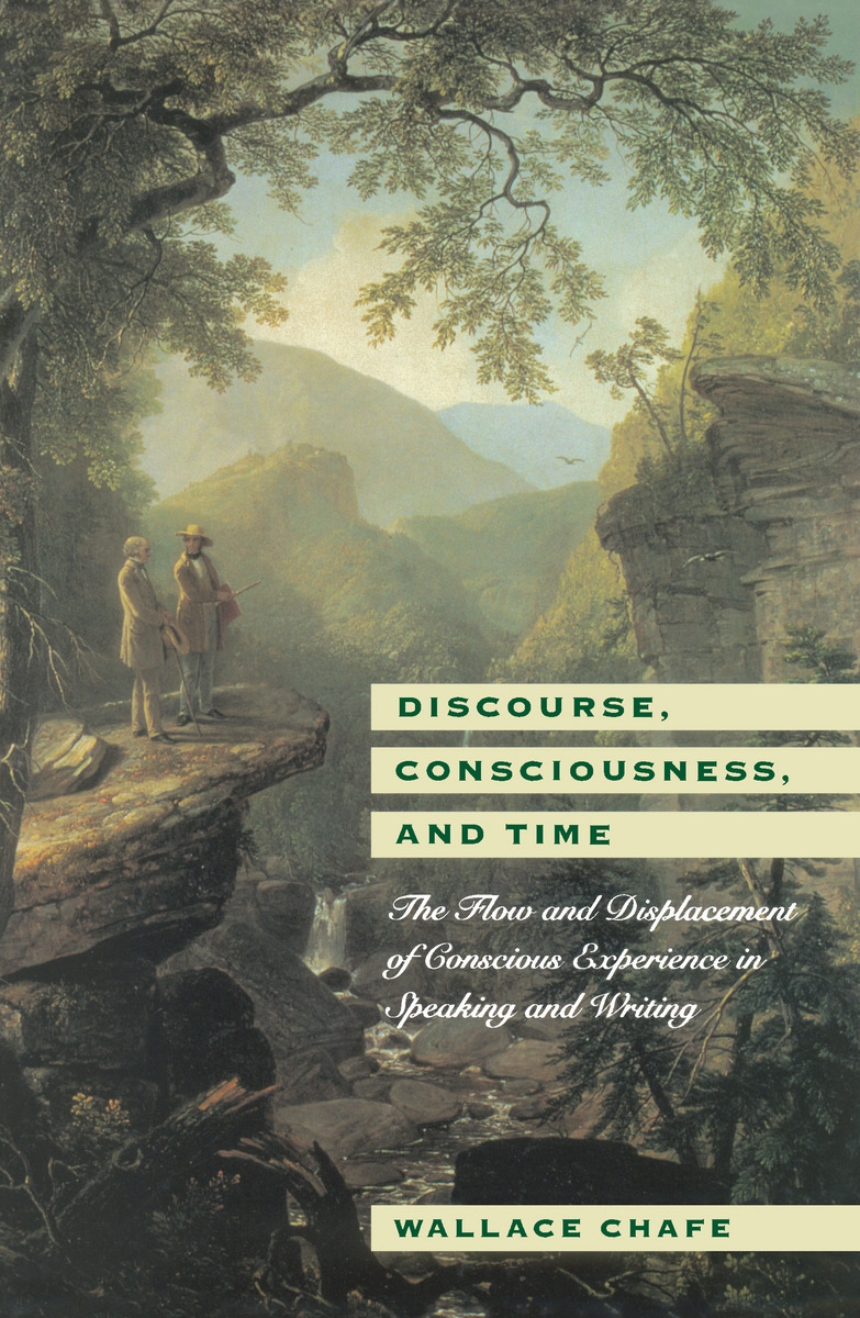Discourse, Consciousness, and Time
The Flow and Displacement of Conscious Experience in Speaking and Writing
9780226100548
Discourse, Consciousness, and Time
The Flow and Displacement of Conscious Experience in Speaking and Writing
Wallace Chafe demonstrates how the study of language and consciousness together can provide an unexpectedly broad understanding of the way the mind works. Relying on close analyses of conversational speech as well as written fiction and nonfiction, he investigates both the flow of ideas through consciousness and the displacement of consciousness by way of memory and imagination.
Chafe draws on several decades of research to demonstrate that understanding the nature of consciousness is essential to understanding many linguistic phenomena, such as pronouns, tense, clause structure, and intonation, as well as stylistic usages, such as the historical present and the free indirect style. While the book focuses on English, there are also discussions of the North American Indian language Seneca and the music of Mozart and of the Seneca people.
This work offers a comprehensive picture of the dynamic natures of language and consciousness that will interest linguists, psychologists, literary scholars, computer scientists, anthropologists, and philosophers.
Chafe draws on several decades of research to demonstrate that understanding the nature of consciousness is essential to understanding many linguistic phenomena, such as pronouns, tense, clause structure, and intonation, as well as stylistic usages, such as the historical present and the free indirect style. While the book focuses on English, there are also discussions of the North American Indian language Seneca and the music of Mozart and of the Seneca people.
This work offers a comprehensive picture of the dynamic natures of language and consciousness that will interest linguists, psychologists, literary scholars, computer scientists, anthropologists, and philosophers.
392 pages | 17 line drawings | 6 x 9 | © 1994
Cognitive Science: Human and Animal Cognition
Language and Linguistics: General Language and Linguistics
Table of Contents
Preface
Acknowledgments
Symbols Used in Transcriptions of Speech
1: Introduction
2: Understanding Language and the Mind
3: The Nature of Consciousness
4: Speaking and Writing
5: Intonation Units
6: Activation Cost
7: Starting Points, Subjects, and the Light Subject Constraint
8: Identifiability and "Definiteness"
9: The One New Idea Constraint
10: Discourse Topics
11: Topic Hierarchies and Sentences
12: Another Language
13: Some Alternative Approaches to Information Flow
14: The Flow of Consciousness in Music
15: The Immediate and Displaced Modes in Conversational Language
16: Representing Other Speech and Thought in Conversation
17: Displaced Immediacy in Written First-Person Fiction
18: Representing Other Speech and Thought in First-Person Fiction with
Displaced Immediacy
19: Displaced Immediacy in Written Third-Person Fiction
20: Written Fiction That (Partially) Lacks a Represented Consciousness
21: Written Nonfiction
22: Displacement Integrated with Flow
23: Written Paragraphs and Discourse Topics
24: Epilogue
References
Index
Acknowledgments
Symbols Used in Transcriptions of Speech
1: Introduction
2: Understanding Language and the Mind
3: The Nature of Consciousness
4: Speaking and Writing
5: Intonation Units
6: Activation Cost
7: Starting Points, Subjects, and the Light Subject Constraint
8: Identifiability and "Definiteness"
9: The One New Idea Constraint
10: Discourse Topics
11: Topic Hierarchies and Sentences
12: Another Language
13: Some Alternative Approaches to Information Flow
14: The Flow of Consciousness in Music
15: The Immediate and Displaced Modes in Conversational Language
16: Representing Other Speech and Thought in Conversation
17: Displaced Immediacy in Written First-Person Fiction
18: Representing Other Speech and Thought in First-Person Fiction with
Displaced Immediacy
19: Displaced Immediacy in Written Third-Person Fiction
20: Written Fiction That (Partially) Lacks a Represented Consciousness
21: Written Nonfiction
22: Displacement Integrated with Flow
23: Written Paragraphs and Discourse Topics
24: Epilogue
References
Index
